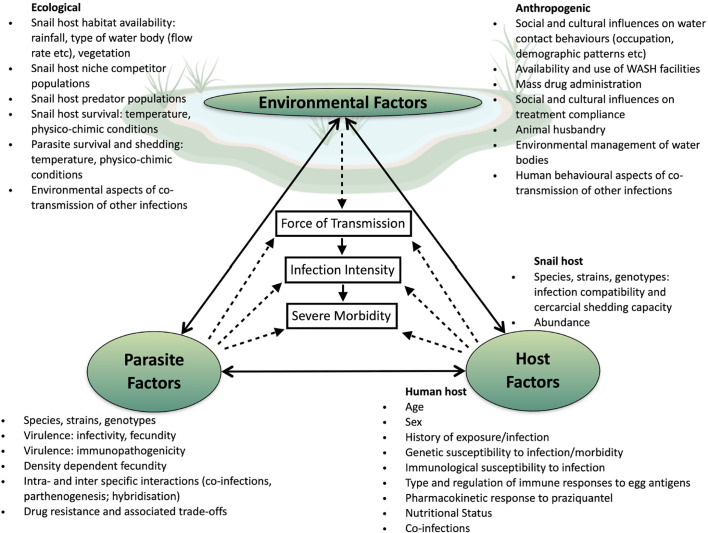Figure 1.
Potential drivers of persistent transmission and morbidity hotspots. Within the center of the transmission triangle are three elements known to be directly linked (solid arrows): force of transmission from the snail to human host is directly related to accumulation of infections over time and thus an increase in intensity of infection as measured by egg excretion; in turn high infection intensity is a known (but not sole) factor in the development of morbidity. Force of transmission of Schistosoma species is influenced by interactions (dotted arrows) between environmental, parasite and host factors. Once within the human host further interactions between parasite and host will determine the successful accumulative establishment of adult worm pairs and the fecundity of those worm pairs. Further interactions between the parasite and host will influence whether the host will develop severe morbidity. While interactions between environmental, parasite and host factors combine to drive up the force of transmission resulting in hotspots, these factors do not exist in isolation of each other, with direct influences from one corner of the transmission triangle to another occurring.

